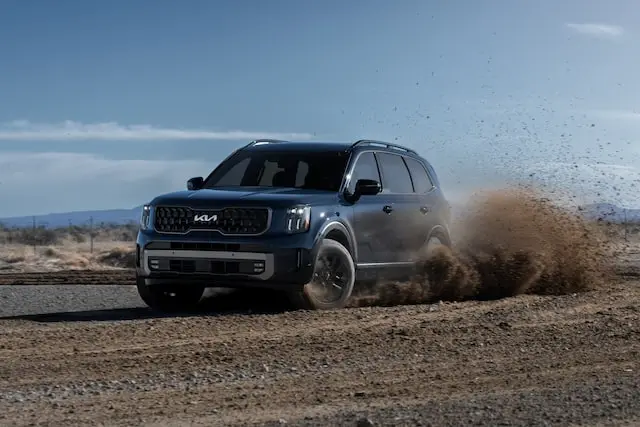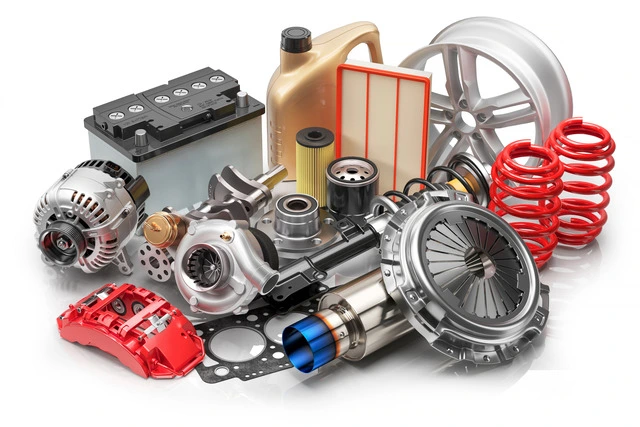Cars have an intricate system that needs to be taken care of often, or else it fails. One of the system’s most important parts is the wheel bearing; if this goes bad, your life while driving could be in danger. Here’s how to tell if a wheel bearing is bad and what to do in that case.
What Are Wheel Bearings?
Wheel bearings are crucial components for steering and wheel control. Their role is to allow the wheel to turn without friction and problems. If a wheel bearing is bad, the wheel can break off, even while driving. This can be extremely dangerous for drivers and passengers, but it can be fixed if noticed on time. One of the top-notch products you can find on market to buy is Detroit Axle – 4WD 515096 Front Wheel Bearing.
A wheel bearing is an intricate array of parts. It’s made of several steel balls in a metal ring (called a race) set at the center of a wheel’s hub (the hollow part in the wheel’s center). Together with the ABS, wheel speed sensor, hub, and mounting flange, the wheel bearing makes the car’s braking, steering, and suspension systems.
How Long Do They Last?
Essentially, wheel bearings are meant to last a lifetime. Unlike the U-joints and the delicate spark plugs, this car component can go years without getting checked or repaired. Despite the longevity, just as a car thermostat can go bad (the best replacement definitely is Engine Thermostat), so can a wheel bearing.
Understanding why your wheel bearing got damaged could help you and your mechanic once you take the vehicle to them for a check. Remember – just because it lasts a lifetime doesn’t mean it can’t break. If you hear weird noises from your vehicle, assume it’s this component and head to an expert right away.
Why Are They Important?
Wheel bearings hold the wheels in place and control them. They ensure wheels stay in place while you drive and help the braking and suspension systems to run smoothly. It’s safe to say these components aren’t just important – they’re crucial.
Besides, a bad wheel bearing can affect the automatic transmission or CV joints. Outer CV joints are connected to the wheel, while the inner ones link with the transmission. If this sounds really bad, that’s because it is.
Replacing your entire transmission system due to an error in recognizing a bad wheel bearing is a situation that no driver wants to be in. It’s expensive, takes a while, and might change your car’s entire transmission system. But with the right tools, like Performance Tool W83028 CV Joint Removal, it doesn’t have to be that hard. However, car prices aren’t going down any time soon, so keeping what you have in great shape is a worthy practice.

What Can Cause Damage to a Wheel Bearing?
Without being mean, I can tell you that bad driving damages the wheel bearing more than any other problem. Hitting potholes, racing over speedbumps, and taking your four-wheeler everywhere like it’s an off-road vehicle are the fastest ways to wreak havoc on the wheel bearings.
Besides these usually awful practices, driving around in different terrains and weather conditions typically cause wear and tear on these components. Sometimes, sand, mud, or water can get into and through the round seals, damaging the bearings directly. This kind of damage would be considered premature, seeing how the components are made to last a lifetime.
Custom Bearings May Not Always Be Suitable for Your Vehicle
Something lots of people like to do is customize their cars. I find this practice great if you have the money and time, but it can be detrimental to a vehicle’s health. Customized wheels and bearings aren’t always made to fit your car exactly. Some car shops have custom-made items, but they’re usually universal or for a specific class of car (sedans and sports cars, for example).
Wrong wheels and tires can put additional stress on the bearings and break them. And I don’t mean winter or summer tires, but their size. Large wheels shouldn’t be put on a car that doesn’t require them.

Here’s How to Tell if a Wheel Bearing Is Bad
I’m done frightening you, although I believe the scary part is just coming. You understand the importance of a wheel bearing, but how can you tell it’s gone bad? There are pretty straightforward signs of this component’s failure, all presented below.
- Unusual noises,
- Failing ABS,
- Uneven tire wear,
- Car pulling to one side,
- Vibrating steering wheel,
- Loose and unresponsive steering wheel.
If you experience one of these signs, it’s crucial not to hesitate and head straight to a mechanic for a check-up. In case you don’t have a trusted car repair shop, call the ones nearby, describe the problem, and compare prices.
You may be in a rush to get the wheel bearing fixed, but it’s still recommended to compare various repair costs and decide what’s best. This is also because some of the issues listed below may not explicitly be connected to the wheel bearings. They are common symptoms, though, so pay attention.
The Sound Is an Obvious Sign of a Problem
Although a car can make many sounds, when the wheel bearing is off, there will be some uncomfortable noise coming from it. Typically, these sounds would resemble a squeal or a growl and will intensify when the car speeds up.
To determine where the sound is coming from, simply listen to it. Pinpointing it will be easy; ask a friend or family member for another pair of ears to be certain you hear the same things.
The ABS System Doesn’t Work
ABS stands for the anti-locking braking system, and it’s there to release pressure and tension from the brakes through an array of perfectly set up sensors. I shouldn’t mention how much or why this component is vital for the car to function properly; you might be able to tell by yourself. If you need to replace it, I recommend GM Genuine Parts 13385428 Anti-Lock Brake System (ABS).
Don’t take ABS for granted. If the braking sensors don’t work well or at all, the root cause might be the wheel bearing. You’d have to get double repairs (ABS and bearings included,) but your life will inevitably be saved.
How to recognize a failing ABS? From a wobbly wheel, tire, and ring.
Tire Wear Is Uneven
Say you noticed that one of your tires is worn out, but the other’s just fine. If you’ve changed the tires at the same time, it wouldn’t make sense for one to get damaged before the other. In that case, you may have a wheel bearing issue.
This could also indicate that the tires are unevenly inflated, but just to be sure, you should check for both issues. Overinflated tires tend to pop, leaving you stranded on the side of the road. So, having an AstroAI Tire Inflator Portable Air Compressor Air Pump for Car Tires in your vehicle is a must. But if you don’t know how to change a flat tire, the issue can be worse than imagined.
The Car Pulls to One Side
If your car has damaged wheel bearings, it will pull to one side when you hit the brakes. That’s usually the side with the worn-off component. In tight traffic situations, this could be dangerous. Considering some drivers have extreme cases of road rage, they might easily blame you for poor driving when it’s actually a bigger issue with your car’s components.
Vibrating and Loose Steering Wheel
Since the steering wheel is a part of the braking, suspension, and steering systems, it’s also connected to wheel bearings. This entire scheme of components will start to show symptoms of a problem at some point; two things that are obvious tells are vibrations and looseness in the steering wheel.
If the steering wheel vibrates when the car speeds up or when turning left and right, this could indicate a problem with the wheel bearing. Similarly, you could have the same issue on your hands if the steering wheel is less responsive to commands or less precise.

How to Tell the Difference Between Car Noises (And Identify the Problem)
Considering how sound is the best way to tell if something’s wrong with the car, the easiest way to guess a problem with wheel bearings is to listen to it. The car could make more noise than usual, but some sounds are more distinct than others and pose risks to your and the car’s health.
Bear in mind, too, that all the unusual sounds coming from your vehicle should be checked out by a professional mechanic, sooner or later (but of course, the sooner, the better).
- Humming – hearing a steady hum will rarely indicate wheel bearing issues; it’s more likely that the problem is the CV joint or the tires themselves,
- Squealing and growling – as mentioned above, these sounds are telltale signs of bad wheel bearings. They appear cyclically, and usually when the car speeds up or turns; turning the steering wheel could cause the sound to intensify, too,
- Clicking – if the car clicks, this isn’t just a problem with the bearing, but it can indicate an issue with the entire wheel hub assembly. This is another type of noise that only worsens when the car accelerates,
- Howling – if this noise happens when the car decreases speeds, you might likely be dealing with a loose pinion-bearing preload. If it happens while you increase speeds, it could indicate worn-out gears and bearings.
The Cost of Replacing the Wheel Bearing
It’s a bit tough to accurately determine the cost of a wheel bearing replacement. This is because the repair type and cost depend on the make, model, and year of the car. If you own a Honda, taking it to a Honda-only repair center will likely provide a faster and more reliable replacement.
However, make-only repair shops may introduce exclusive prices, and the repairs end up costing an arm and a leg. Try to research this online or call different mechanics to check for the costs.
What’s safe to say about replacing or repairing this component is that it is standard practice. Changing it doesn’t require a special or unique procedure, rituals, or prayers. Just a good old skilled mechanic that doesn’t judge or ask unnecessary questions.
Sometimes, other repairs can occur besides the wheel bearing issue. This is normal, considering that the component is part of an intricate system in charge of the most important car functions – steering, suspension, and braking. That means potentially having to change suspension components or remove the steering knuckle.

If You Recognize One of the Signs, See a Mechanic Immediately
I won’t beat around the bush – if there’s something wrong with your car, no matter which of the signs and symptoms you notice, it should be taken straight to a mechanic. Pay special attention to noises. If you hear squealing, clicking, or growling just as you accelerate or turn, don’t risk it.
I know mechanics are expensive and repairs can take a while, but the longer you leave the car to decay, the more it’ll cost to maintain over time. Not to mention that if you have any plan at all to sell it later in life, you can say goodbye to that option.
Don’t put your and your passengers’ lives at risk by ignoring the big issue. Make sure to keep the four-wheeler happy so everyone else can be, too.








